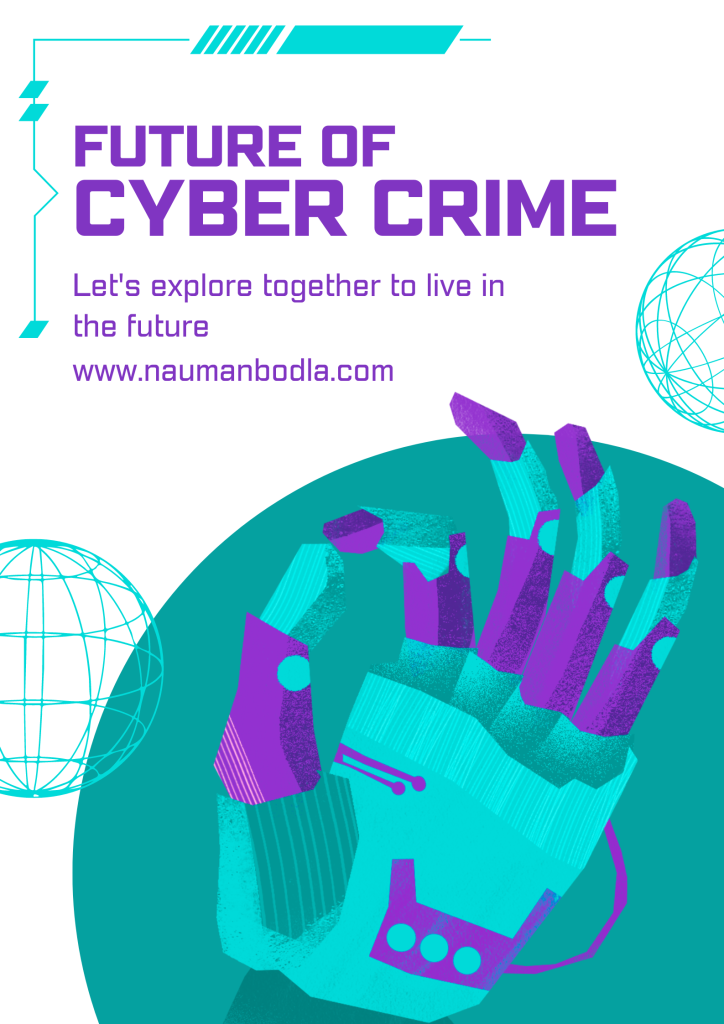How to Identify Deepfakes?
With the ongoing evolution of digital world and particular with the enhancement in the field of Artificial Intelligence, a new phenomenon i.e deepfake has evolved. Although these digital creations are fascinating yet they carry a great concerns and implications for our society. With the advancement in technology it has become very convenient to create realistic fake videos which are known as deepfakes. Now it is not only possible but also becoming increasingly famous. Before learning about how to identify deepfakes, it is important to understand that what are deefakes, only then we can assess that any image or video that we are viewing is original or deepfake.
What are Deepfakes?
Deepfakes are manipulated videos or images that use artificial intelligence (AI) algorithms to replace someone in an image or video with someone else’s face or voice. The tools to perform deepfakes have developed so much that these alterations can be really hard to detect and they give the impression that the person in the video is saying or doing things which they never actually said or did. Just imagine that you are watching a video of someone whom you know, but the fact is that it’s not really him speaking or acting in that video. Such videos or images are created or generated using the technique of deepfakes and for that purpose specialized tools for A.I are used.
Introduction to the Technology
The hidden fact of deepfake technology is a complex integration of algorithms which is applied to the available data to create and generate fake images and videos. The first step is collection of large number of images and videos of a target person and feeding them to a tool that learns to alter their facial expressions and movements. This process is known as machine learning which enables the creation of highly convincing digitally created fake images and videos.
Impact on Human Life
As long as deepfakes are used for harmless pranks or entertainment purposes it can be very interesting but potentially it has very drastic impact on human life if used with negative intention. Just imaging a scenario where a deepfake video is circulated in which someone is falsely implicated in a crime or some damaging rumors about a public figure are circulated.
How Do Deepfakes Work?
The principle of machine learning is used to implement Deepfake technology. Specifically a there is a subset called deep learning which initially works to learn about the target object, subsequently it works to change the original to the fake one. To better understand that how do deepfakes work please read the following processes which are by and large adopted by most of the tools:
Data Collection:
The idea behind deepfakes is to teach the AI tools about facial features, expressions and gestures of target person. To achieve this initially a large dataset of images and videos of the target person is provided to the AI tool which helps the tool to understand the facial features, expressions, and mannerisms of the individual.
Training the AI:
Computer is just like a newborn baby but as the baby grows and turn in to teenage and then adult and mature. During all these phases human learn from its surroundings and decides and reacts in different scenarios. Similarly the AI algorithm is a type of neuron and this neuron is trained using the dataset that is provided to it. For deepfakes it learns to recognize patterns in the facial features, reactions and body movements of the target person. Once the AI toll has learnt sufficient about the target person, it can do miracles to implicate its face, body parts, voice e.t.c
Deepfake Creation:
After training or feeding the AI toll with all required information of the target person, it can generate new images or videos which applies the facial expressions and movements of the target person on an existing footage and generates a new footage with new faces and/or voice.
Refinement:
With the passage of time and regular advancement in the field advanced algorithms have evolved which may further refine the deepfake to enhance its realism e.g minimizing visual artifacts, adjusting lighting, and synchronizing lip movements.
Implications of Deepfakes
Every development has a flip side, same is the case with deepfakes. If deepfakes is used responsibly it can be entertaining but if this technology is used maliciously then it can have several serious concerns like:
Misinformation:
With the developing AI revolution, deepfakes are being used to spread out misinformation, creation of fake news, spreading defamatory content, and infringement into personal lives to damage reputation of a target person.
Exploitation:
With the help of deepfakes, politicians, celebrities, and other public figures can be targeted, to influence public opinion against or in favor of the target person and even election polls can also be rigged by using far or against any particular party or person.
Privacy Concerns:
Privacy acts are enacted throughout the world but use of deepfake technology raises significant privacy concerns because anyone’s likeness or dis-likeness can be used without their consent by deepfaking his image or video.
Trust Issues:
As there is prema-fecie no difference in original or deepfakes therefore, this is actually causing to minimize trust in media and eventually resulting in undermining the credibility of genuine video evidence.
How to Identify Deepfakes?
How to identify deepfakes is a difficult and hactic task because there is actually no hard and fast rule to identify deepfakes yet there are some techniques which may assist us that how to identify deepfakes. As the deepfakes technology is developing day by day, the technology counter developers are also working hard to develope tools to make it convinient for users that how to identify deepfakes. Fortunately, efforts are being put in to detect the challenges that are imposed by deepfakes. Researchers are developing tools to detect and mitigate the impact, while policymakers are exploring ways to regulate its use. In addition to all this, raising awareness about deepfakes and persuading media regarding propagation of how to identify deepfakes are important steps to empower individuals.
Use of Technology for How to Identify Deepfakes:
As we all know that for every curse there is a cure therefore, researchers are developing tools to detect deepfake videos by analyzing inconsistencies. These inconsistencies are detected from facial movements, audio, and other visual signs.
Legislation and Regulation:
The issue of deepfakes is not confined to the individuals only but it is actually effecting the government setups also. Therefore, governments are amending laws and regulations to address the malicious use of deepfake technology. These amendments include laws against distributing harmful deepfake content.
Public Awareness:
Any Government on its own cannot curb any cybercrime including deepfakes. Therefore, Governments are coming up with the idea of educating the public about the existence of deepfakes and how to evaluate online content. This act on the part of government organizations can help mitigate the impact of deepfakes.
Role of Influencers:
This is an important factor of any online crime where I mean that influencers are playing important role in building up general public perception. Therefore, the influencers must be approached and persuaded to play their role in spreading the truth about use of AI and editing techniques in videos to their audience.
Identifying a Balance
As the evolving digital world it is necessary to keep a balance between innovation and its misuse. While deepfake technology is offering exciting possibilities, we must remain vigilant against its potential harm to our lives. This is only possible by learning that how to identify deepfakes and advocating for its ethical use.
Conclusion
Lets now conclude the topic by saying that deepfake technology is a double edge weapon that contains entertainment and risks to society. Therefore, before learning how to identify deepfakes, it is important to understand that how deepfakes work and what are the potential consequences. Hence by use of technology, enacting appropriate laws, and by promoting media literacy, we can move towards minimizing the harmful effects of deepfakes. We can move forward to future only when we understand that technology moves on and our lives have to move with the innovation and not to remain stagnant. Therefore, why should we not start our journey with open eyes and open mind and get ourselves ready to counter the complexities of deepfakes.
How to Report/File a Complaint?
Being a victim of any criminal activity or fraud, it is a social responsibility of every individual to report it to the concerned authorities. Therefore, now I will try to explain that how can an individual who is a victim of an online fraud can report to the concerned authority of his related country.
USA
If you are a resident of United States of America and is a victim of an online fraud, you can directly report and file a complaint online by visiting https://complaint.ic3.gov/ .
UK
For UK nationals or for those living in UK the individual has to first create an account and then he can file a formal complaint by visiting https://reporting.actionfraud.police.uk/login , alternatively you may call 0300 123 2040 for registering your complaint.
Canada
While living in Canada or being a resident or national of Canada you may call 1-888-495-8501. If you have a Government of Canada ID and have GC ID and password then you ma visit https://www.services.rcmp-grc.gc.ca/chooser-eng.html?ipeReferer=CAFCFRS and register your complaint online.
France
French nationals and those living in France may register their online complaints by visiting https://www.service-public.fr/particuliers/vosdroits/F1435?lang=en#:~:text=For%20credit%20card%20fraud%20or,on%20Service%2DPublic.fr.
Pakistan
All Pakistani nationals and those who are at the time of crime residing in Pakistan may register their complaints regarding online fraud at https://www.nr3c.gov.pk or https://www.nr3c.gov.pk/creport.php. You can also register a complaint via email at helpdesk@nr3c.gov.pk or by calling at 0092 51 9106384 or on cell No 0092 336 6006060.
India
Indian nationals and visitor can call helpline number 1930 or report their complaints on National Cybercrime Reporting Portal https://i4c.mha.gov.in/ncrp.aspx#:~:text=Complaints%20can%20be%20reported%20through,on%20National%20Cybercrime%20Reporting%20Portal. Alternatively they can visit https://cybercrime.gov.in/ to report their complaints.
UAE
You can report cybercrimes to the nearest police station in your area, or call 999 for help in case you are a victim of an online fraud in UAE, alternatively you can also register your complaints online at https://www.dubaipolice.gov.ae/wps/portal/home/services/individualservicescontent/cybercrime. UAE also has a live portal of online frauds at https://twitter.com/moiuae/status/1762866045822349606 where you can keep yourselves up to date regarding online frauds in UAE.
Australia
While being a victim of online fraud if you are an Australian national or visiting Australia you can register your complaint regarding online fraud by simply clicking www.reportCyber.gov.au or by calling the Australian Cyber Security hotline on 1300 CYBER1 (1300 292 371). Australia also has a dedicated portal to register online fraud complaints at https://portal.scamwatch.gov.au/report-a-scam/ where you can directly register your complaints.
Other links of your interest:
Delving into the Digital: A Look at Cyber Crime Investigations




Pingback: Data Breach - Nauman Ashraf Bodla